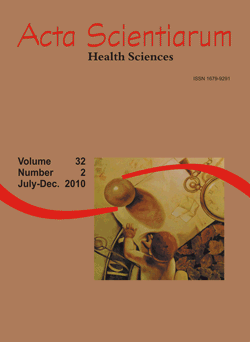<b>Right to health and basic sanitation in health strategy to the family in “Complexo do Alemão”</b> - doi: 10.4025/actascihealthsci.v32i2.7449
Keywords:
basic sanitation, right to health, nursing
Abstract
This article results from the interest in stimulating the discussion on the possibilities of guaranteeing the right to basic sanitation, in a community located in “Complexo do Alemão” – Rio de Janeiro, Rio de Janeiro State, from the Family Health Strategy (FHS) insofar as we understand the right to basic sanitation as closely integrated with the right to health. This article proposed to identify the perception on the right to basic sanitation of professionals working in the Nova Brasília FHS, to analyze the relation between basic sanitation and right to health through these professionals, and discuss the use of Form A in gathering data about the infrastructure conditions of people in that region. As a result, we found that this discussion is still peripheral among the FHS operating teams in the region, and that the association they make between basic sanitation and health amounts to a reductionist view, which is expressed in a poorly propositional practice in terms of substantial interventions in access to sanitation. It is concluded that the FHS needs to revise its proposals and practices from its own contradictions, among them its omission to the challenge of fighting to guarantee of the right to health and sanitation in areas where it operates.Downloads
Download data is not yet available.
Published
2010-09-28
How to Cite
Oliveira, S. C., & Vargas, L. A. (2010). <b>Right to health and basic sanitation in health strategy to the family in “Complexo do Alemão”</b> - doi: 10.4025/actascihealthsci.v32i2.7449. Acta Scientiarum. Health Sciences, 32(2), 127-134. https://doi.org/10.4025/actascihealthsci.v32i2.7449
Issue
Section
Health Sciences
DECLARATION OF ORIGINALITY AND COPYRIGHTS
I Declare that current article is original and has not been submitted for publication, in part or in whole, to any other national or international journal.
The copyrights belong exclusively to the authors. Published content is licensed under Creative Commons Attribution 4.0 (CC BY 4.0) guidelines, which allows sharing (copy and distribution of the material in any medium or format) and adaptation (remix, transform, and build upon the material) for any purpose, even commercially, under the terms of attribution.
Read this link for further information on how to use CC BY 4.0 properly.























5.png)







